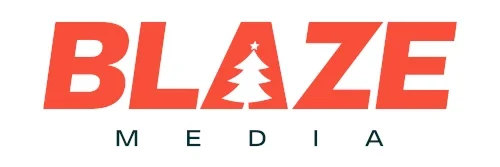What’s the first thing you should do before you decide to kick off any marketing strategy for your business?
You might think it’s to work out your budget, decide on the platforms you want to use, or even choose a marketing agency to help you with your deliverables…but you’d be wrong.
The very first thing you should do is to create your ideal client persona; because by understanding your intended audience, you can develop and deliver your marketing efforts far more effectively.

What is a Client Persona?
A client persona (also known as an avatar) is essentially a fictional representation of your ideal customer.
It enables you to fully understand your target audience’s needs, preferences, and behaviours with precision.
Setting some quality time aside to create your client profile will help you decide on everything from language and tonality to branding and choosing the right marketing platforms.
Why Client Personas Matter
Targeted Communication:
Client personas allow you to communicate with your audience in a more targeted and personalised manner.
By understanding the specific demographics, interests, and pain points of your customers, you can craft messaging that resonates with them on a deeper level.
Improved Product Development:
Developing products or services that align with the needs and desires of your target audience is crucial for success.
Client personas provide valuable insights into what your customers are looking for, enabling you to tailor what you offer accordingly.
Enhanced Marketing Strategies:
From content creation to advertising campaigns, client personas inform every aspect of your marketing strategy.
By knowing who your audience is and where they spend their time online, you can allocate resources more effectively and maximise your ROI.
Increased Customer Satisfaction:
When customers feel understood and valued, they are more likely to engage with your brand and become loyal advocates and early adopters…maybe even influencers.
Client personas help you anticipate customer needs and deliver experiences that exceed expectations, fostering long-term relationships.
Do I Choose Just One Target Audience?
We’ll take a moment here to point out that it is very possible – in fact, it’s more than likely – that you will have more than one ideal client.
To run a successful business, you might find you need to adapt and offer more products or services…and this could mean hitting a new audience with different aspirations and expectations.
Think of an event management company that has been delivering weddings but decides to branch out into corporate work – while both services are within the same industry, they appeal to two very different audiences.
This means identifying two different demographics and two very different approaches to marketing.
Even if you have the (relative) pleasure of just looking at one demographic, your audience can still be split into 3 sub-sections:
Bread and Butter:
These are the customers whose purchases cover the bills and keep you running. They could be paying a retained fee or have a monthly subscription with you.
Their value should never be underestimated as they’re the ones who will rave about you and encourage their friends or contacts to use you too.
Cream:
These are the people/businesses who, when they become a client, make your week or month.
For example, if you make handmade cards, this could be a local, independent retailer who agrees to stock them and sell on for a percentage.
Dream:
These are the biggies, the ones who make your year.
The high street chain that agrees to stock your clothing, the council that awards you an annual cleaning contract etc.
So, who do you target?
Well, you put most of your effort and spending into the dream clients.
You will automatically collect your more regular clients through referrals, word of mouth and brand awareness generated from your aspirational advertising.
Likewise for your ‘cream’ clients…they look to your dream client as their inspiration so if you’re working with that big name that they covet, they will want to work with you too.

How to Create an Effective Client Persona
Now comes the fun part so grab a coffee, some post-it notes and coloured pens (or your laptop if you’re into this new-fangled technology.)
Creating client personas involves thorough research, analysis, and creativity so consider these steps:
1. Conduct Market Research
Begin by gathering information on your dream target market. This may include demographics such as age, gender, location, income level, and occupation.
Use tools like surveys, focus groups, and online analytics to gain insights into your existing and potential customer bases and audience segments.
2. Identify Common Traits and Characteristics
Once you’ve collected sufficient data, look for patterns and commonalities among your audience. Group individuals with similar traits together to form distinct segments.
Consider factors such as interests, behaviours, challenges and purchasing habits.
3. Develop Persona Profiles
Based on your findings, you must create detailed persona profiles for each segment identified.
Give each persona a name, age, occupation, and personal background to humanise them.
Sounds odd we know, but stick with it…think of them like your grown-up imaginary friend!
Include relevant details such as hobbies, aspirations, pain points, and preferred communication channels.
4. Validate Your Personas
Validate your personas by testing them against real-world data and feedback.
Reach out to existing customers or conduct additional surveys to confirm that your personas accurately represent your target audience.
Make adjustments as needed to ensure accuracy and relevance.
5. Use Visuals and Storytelling
Bring your personas to life by incorporating visuals and storytelling elements.
Create visual representations such as photos or illustrations to depict each persona, along with engaging narratives that highlight their goals, challenges, and experiences.
6. Integrate Personas Across Marketing Channels
Once your personas are finalised, integrate them across all marketing channels and touchpoints.
Tailor your messaging, content and offers to resonate with each persona’s preferences and needs.
Use them as a filter for all marketing decision-making – and if you’re using an agency share this information with them…they’ll love you for it!
And don’t just create your new mate then ghost them – monitor your performance metrics closely and build on your strategies as you gather more information over time.
Example of Creating a Customer Persona
Meet Hannah
Remember that event management company from before? Well, let’s use them as a case study to demonstrate what we’ve discussed.
We know that the main service they currently provide is wedding planning. Now, weddings come in all shapes and sizes but we can generally rule out those on a very small budget as hiring a private wedding planner won’t be on their list of priorities.
We’re looking for the dream client persona so we’re going for couples who are happy to spend upwards of £70,000 on their wedding.
By determining this factor we can then go on to make some assumptions about the intended audience which helps us create our client profile:
- To have this much to spend on a wedding, both partners will have successful careers with well paid jobs
- This, in turn, means they are likely to be in their thirties
- Being in this age range, we can assume they live together and have young children
Having this information can lead us to insights into their personal lives and interests such as:
- They have a dog
- The like staycations
- They prefer date nights out for food rather than clubbing
- Time off is around school holidays
- Downtime includes ferrying the kids to out of school clubs
- Aspire to have more ‘me time’ for pampering and spending time with friends
From here we name our dream client Hannah and decide she’s 34 and a solicitor.
So now we know who she is and what she likes, we need to look at when she will be engaged with online content and what platforms she will be on.
As a professional, she will be on Linkedin but she won’t be using it to plan her wedding, it’s far more likely that she’s using Instagram and Pinterest for inspiration and she’ll have a Whatsapp group for her bridesmaids.
This means, as a wedding planner, we should be considering organic social media campaigns using Meta and Pinterest, paid social ads on Meta and Pinterest and even creating a WhatsApp channel.
Refining this even further, we can look at Hannah’s day and work out when she is most likely to be engaging with content or searching for wedding inspiration.
We know she works, so her wedding will be at the back of her mind throughout the day. After work, she will be picking the kids up, having dinner with the family and putting them to bed.
Realistically it’s at least 7:30/8pm before she is relaxing on the settee with her iPad and searching out ideas and advice.

Meet Matt
The same event management company has decided to branch out into corporate events and they want to work with established tech and finance companies across the country.
This is where Matt comes in…he’s our client persona for this service.
Matt is the Marketing Manager for a large tech firm whose brief is to engage an event management agency to deliver a product launch for potential clients.
Assumptions we can make about him:
- He’s in a senior position so is in his thirties
- He is a perfectionist and thrives on deadlines (sounds like us)
- He’s in a relationship and lives with his partner
- They are both well paid and enjoy travelling
- His interests include gaming, tech and nights out with friends
- Work/life balance is important to him
It would be an easy mistake to think that the event company could market to him in a similar fashion to Hannah…after all, its event management and inspiration can be found on Instagram as well.
However, a corporate event is much different to a wedding.
A company would expect their corporate event planner to have more creative control as it’s less personal, meaning they aren’t looking for colour palettes, centrepiece ideas and favours.
That means it’s the event planner looking for inspiration on Instagram, while Matt is searching for event management specialists on Linkedin.
See the difference?
Oh, and he won’t be looking at 8pm over a glass of wine with his feet up…this is work so he’s searching and engaging throughout the working day.
Helping you Reach the Right People at the Right Time!
By understanding the unique needs, preferences and behaviours of your dream customers, you can craft compelling messaging and experiences that drive engagement, loyalty and growth.
At Blaze Media, we will either use your existing profiles to craft the most engaging and profitable digital marketing campaigns, or we can help you build your own personas that we will then implement and you can take away to use in the future.
Getting under the skin of your business is what we do from the very start of your relationship with us so why not get in touch and book a chat to see how we can think bigger and do better, together?


